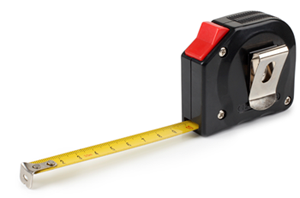How To Use Utility Bills for M&V
There are several means to accomplish measurement & verification (M&V) for energy savings projects. One of the most straightforward methods is to use your organization’s utility bills.

The logic goes something like this: You have an inefficiency in your energy system. That system is located in a building served by a utility meter for which you receive a utility bill (could be a submeter, but the same logic would apply). You have the utility bill history, so you execute an energy saving project to improve energy efficiency. When done, you compare the post-project utility bills for the same building/meter with the historical bills. Ideally, the energy use (and associated cost) should decline, providing a metric to assess the success of the project.
But what if the weather was colder this winter, so you ended up using more energy to heat the building in spite of the project? Or what if you had to accommodate a dozen new employees in the same space? So the real challenge is to account for unrelated variables that can skew your data and prevent you from getting an accurate picture of project effectiveness.
Fortunately there is a guideline to help sort out savings. It’s called the International Performance Measurement and Verification Protocol (IPMVP). The standard is managed and maintained online by an international non-profit called The Efficiency Valuation Organization (www.EVO-World.org). IPMVP provides four different M&V options, but the one we are interested in is Option C, the “Whole Facility” methodology.
The IPMVP Option C methodology is simple:
- Establish a baseline year.
- Adjust the baseline to current conditions to estimate what you WOULD HAVE USED without an energy management program. This is called BATCC—Baseline Adjusted to Current Conditions.
- Then subtract today’s actual bills from the BATCC. The difference in the cost values is “Cost Avoidance”.
IPMVP also provides assistance in identifying variables used to determine the adjusted baseline—variables like weather (expressed in terms of degree days), energy unit price, building square footage, changes in billing period length, enrollment or occupancy, new equipment, or even production units (for industrial facilities).
If you’d like to find out more about M&V, check out our recorded webinar, The ABCs of M&V, {{cta(‘e0abeb56-77e8-4259-9164-15acb12754bd’)}}
 Best-in-class portfolio-level energy and utility bill data management and reporting.
Best-in-class portfolio-level energy and utility bill data management and reporting.
 Real-time energy and sustainability analytics for high-performance, net-zero buildings.
Real-time energy and sustainability analytics for high-performance, net-zero buildings.
 A holistic view of financial-grade scope 1, 2, and 3 carbon emissions data across your entire business.
A holistic view of financial-grade scope 1, 2, and 3 carbon emissions data across your entire business.
 Energy and sustainability benchmarking compliance software designed for utilities.
Energy and sustainability benchmarking compliance software designed for utilities.



